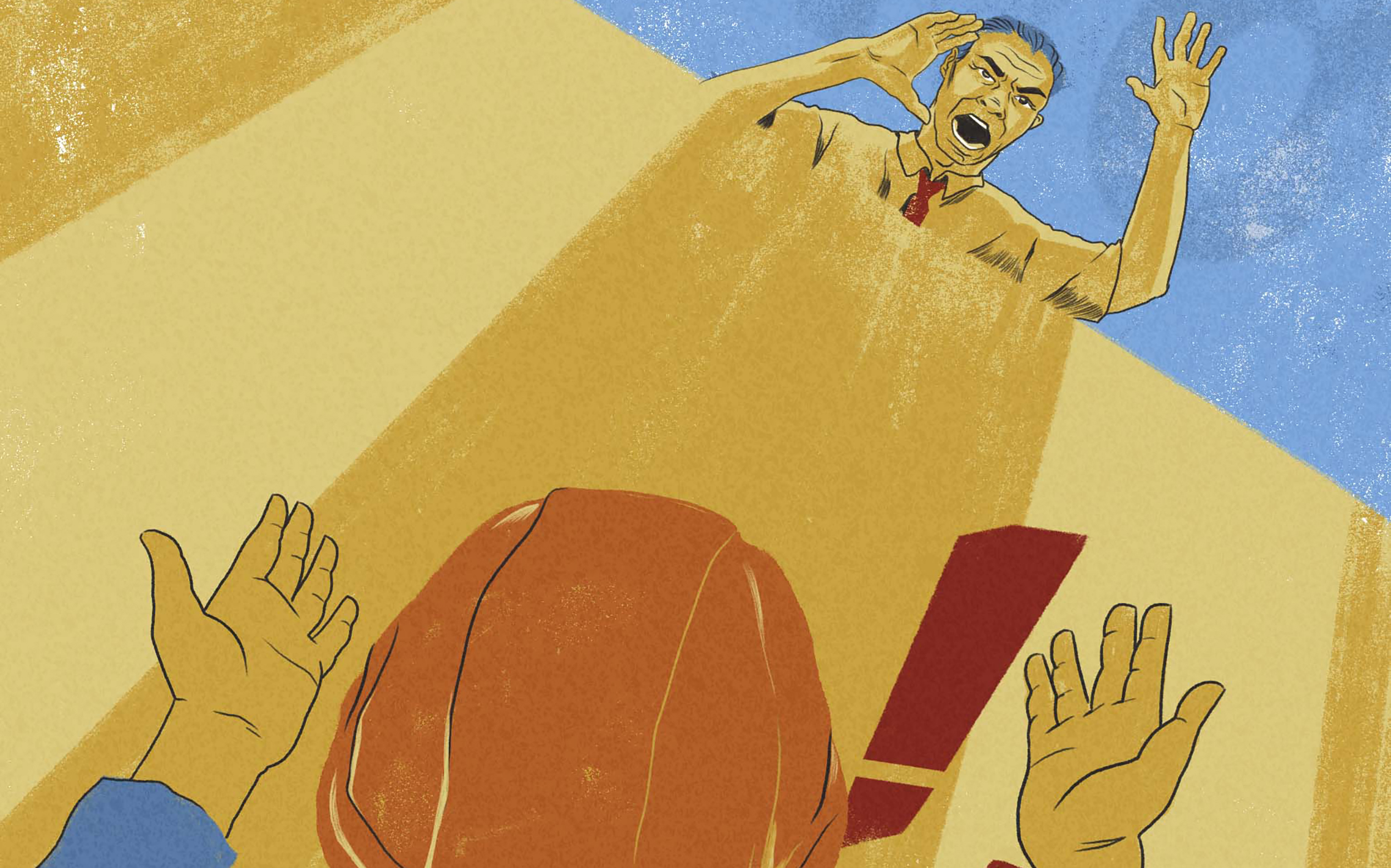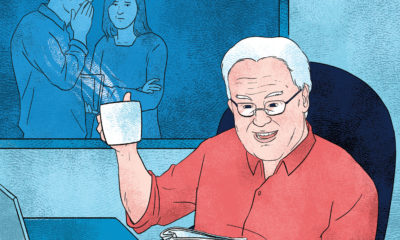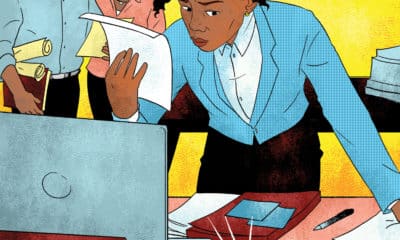
The Case of the Despicable Inspection – How Would You Respond?
A vengeful electrical inspector leaves a sign company facing a no-win situation.
Published
3 years agoon
By
Lawrin RosenThe following is Signs of the Times‘ Real Deal scenario for October. Reader responses can be found at the bottom of the story. To have your own response featured in the October print edition, please comment below.
——————————————————————————————————————————————————
Charlie Prowd, the electrical inspector for the town of Newville, thrived on troublesome conflicts. He frequently targeted sign companies because he believed any installation involving electricity belonged in the realm of fully licensed electricians. Whether local E-1s or E-2s knew the slightest about signs, Charlie only cared if they knew about electricity required to power signs.
In the twilight of Charlie’s career, he faced increasing challenges keeping up with ever-evolving electrical technology such as solar-generated power. A huge, new construction project on the outskirts of town had him endlessly scratching his 64-year-old head. Alset Automotive Corporation, a major manufacturer of electric cars, picked Newville to locate their North American plant, and their building engineers decided to power the new plant with a roof-full of solar panels.
Charlie, a guy revered and feared for his exacting knowledge of the latest NEC (National Electric Code) rules and regulations, found himself off-balance for the first time in nearly 40 years. He spent many nights poring through the internet, searching for information covering solar-generated power and related NEC guidelines. Eventually, frustration set in, and he demanded the town manager bring in a solar consultant. However, the town building department was buried in Zoom meetings, trying to monitor the Alset factory project, the largest local undertaking of its kind. New technology endlessly pitched the provincial group curveball after curveball.
ABOUT REAL DEAL
Real Deal scenarios are inspired by true stories, but are changed to sharpen the dilemmas involved and should not be confused with real people or places. Responses are peer-sourced opinions and are NOT a substitute for professional legal advice. Please contact your attorney if you any questions about an employee or customer situation in your own business.
ABOUT THE AUTHOR
LAWRIN ROSEN is the president of ARTfx (Bloomfield, CT). Email him at lawrin@artfxsigns.com
Frustrated, Charlie reacted to his sudden deficit of expertise by lashing out. During one inspection, he threw an electrician off site for a ridiculous non-infraction — using non-insulated pliers to tighten the cover on a junction box. He called the guy a “dumb hack” in front of a half-dozen co-workers.
At Electro Sign, a local company hired to build the Alset Automotive Corporation’s proposed mammoth roof sign, the project manager and company engineer spent nearly a week researching solar electric conversion. The sign required six 20-amp circuits, and the building engineer had only allotted a 20 x 20-ft. portion of the roof for the sign’s solar panels. Eventually they solved the equation and applied for permits.
Charlie and Fred Hill, Newville’s building inspector, spent weeks hassling Electro administrative personnel about every aspect of the sign before authorizing permits. The sign would be the largest in Newville: a rectangular backlit cabinet measuring 11.5 ft. high x 90 ft. long with large, inverted-triangular wings to the left and right sides. The triangular shapes featured multiple rows of exposed LED strips, completing the shape of Alset’s logo.
AdvertisementDuring the week of installation, Charlie, and Fred sat in a nearby parking lot, passing a set of binoculars back and forth, scrutinizing the installation. However, the installation went without a hitch, so the two inspectors had little to pick on until the final hour, when the headache ball weighting the crane line accidentally clipped the tip of the left triangular wing.
After some deliberation, the installation crew brought the piece back to Electro’s plant for a cosmetic repair. When all was fixed, they returned to the site, but Charlie was up on the roof waving his arms back and forth like a madman. “You ain’t putting that wing back, boys, because this sign has no UL label or identifying marks on it!”
The Electro foreman, Ralph Healy, then realized that the UL label and info with the company name, and electrical specs were on the newly repaired wing now sitting on the crane bed. “Mr. Prowd, the UL label and other info are on this wing,” Ralph shouted up to the scowling electrical inspector.
“Well tough sh-t!’” Charlie yelled back down to Ralph. “You cannot have a sign separated from its tag and then try to compensate after the fact. I’ll need you to take this sign down, return it to your sh-t hole shop, and reattach the components there. Then you can bring it back installed with the proper information displayed on the side. That is… unless your boss wants to order a pretty expensive on-site UL inspection to make sure this whole damn thing is kosher.”
”But Mr. Prowd, I will lose my job if I call the boss with that news!” Ralph pleaded. “Can’t you work with us?”
Charlie Prowd curtly barked back at Ralph with a one-word answer: “No!”
The Big Questions
- What can Electro Sign Company do regarding the out-of-line inspector’s unreasonable request?
- They stand to lose all the profit generated by this job if the sign is removed or the on-site inspection is ordered. Is there a way to reach or reason with Charlie?
- Is there a way to bypass him?
J.H.L.
Los Angeles
Contact the Ombudsman in your state.
Todd T.
Fountain Hills, AZ
Given the fact that the sign was approved by the fictionalized town, I would attempt to reason one more time with Charlie, as the sign already had the UL label and met all of the town’s requirements. If Charlie would not change his position, I would contact his supervisor to attempt to come to an agreement. If that option failed, I would request a meeting with the town manager and explain that all of the town’s conditions had been met and that Charlie was being unreasonable due to him being unfamiliar with the solar-powered technology, etc. I would meet the town manager at the site and fully show and explain all of the important aspects of the sign, its solar power and the installation process. Hopefully a compromise could be reached to allow the sign company to install the sign and not take it back to their shop for the repairs, which would result in a considerable expense for the sign business.
AdvertisementSteve R.
North Charleston, SC
Get the person who inspected and marked the sign in the first place to come out to the site with a new label. He should then take pictures of the repaired damage and apply the new label. If the repair was not satisfactory then it either would have to go back and be repaired properly or repaired on site to meet UL standards.
Randall W.
Montoursville, PA
The electrical inspector is correct on the information he saw at the site. The UL label must be installed in the plant or the field evaluation would be required, after installation. If the UL follow-up inspector saw the label installed in the shop, he should try to convince the electrical inspector the application was done correctly and only became separated by the accident. The sign company may have dated photos with their UL file documentation, hopefully with one showing the labels attached.
Good example: The electrical inspector could also require compliance to 600.34 Photovoltaic (PV) Powered Signs of the National Electric Code.
What’s the Brain Squad?
If you’re the owner or top manager of a U.S. sign business, you’re invited to join the Signs of the Times Brain Squad. Take one five-minute quiz a month, and you’ll be featured prominently in this magazine, and make your voice heard on key issues affecting the sign business. Sign up here.
Lawrin Rosen founded ARTfx Signs (Bloomfield, CT) in 1983. The company focuses on artistically based production of signs, awnings, architectural elements and corporate art. Contact Lawrin at lawrin@artfxsigns.com.

SPONSORED VIDEO
Introducing the Sign Industry Podcast
The Sign Industry Podcast is a platform for every sign person out there — from the old-timers who bent neon and hand-lettered boats to those venturing into new technologies — we want to get their stories out for everyone to hear. Come join us and listen to stories, learn tricks or techniques, and get insights of what’s to come. We are the world’s second oldest profession. The folks who started the world’s oldest profession needed a sign.
You may like

ISA Announces New Tradeshows and Meetings VP

5 Reasons to Sell a Sign Company Plus 6 Options

Sign Products Wrap-Up for April
Subscribe

Bulletins
Get the most important news and business ideas from Signs of the Times magazine's news bulletin.
Most Popular
-

 Tip Sheet1 week ago
Tip Sheet1 week agoAlways Brand Yourself and Wear Fewer Hats — Two of April’s Sign Tips
-

 Ask Signs of the Times2 days ago
Ask Signs of the Times2 days agoWhy Are Signs from Canva so Overloaded and Similar?
-

 Real Deal1 week ago
Real Deal1 week agoA Woman Sign Company Owner Confronts a Sexist Wholesaler
-

 Benchmarks4 days ago
Benchmarks4 days ago6 Sports Venue Signs Deserving a Standing Ovation
-

 Editor's Note2 weeks ago
Editor's Note2 weeks agoWhy We Still Need the Women in Signs Award
-

 Women in Signs1 week ago
Women in Signs1 week ago2024 Women in Signs: Megan Bradley
-

 Product Buying + Technology2 weeks ago
Product Buying + Technology2 weeks agoADA Signs and More Uses for Engraving Machines
-

 Photo Gallery6 days ago
Photo Gallery6 days ago21 Larry Albright Plasma Globes, Crackle Tubes and More










